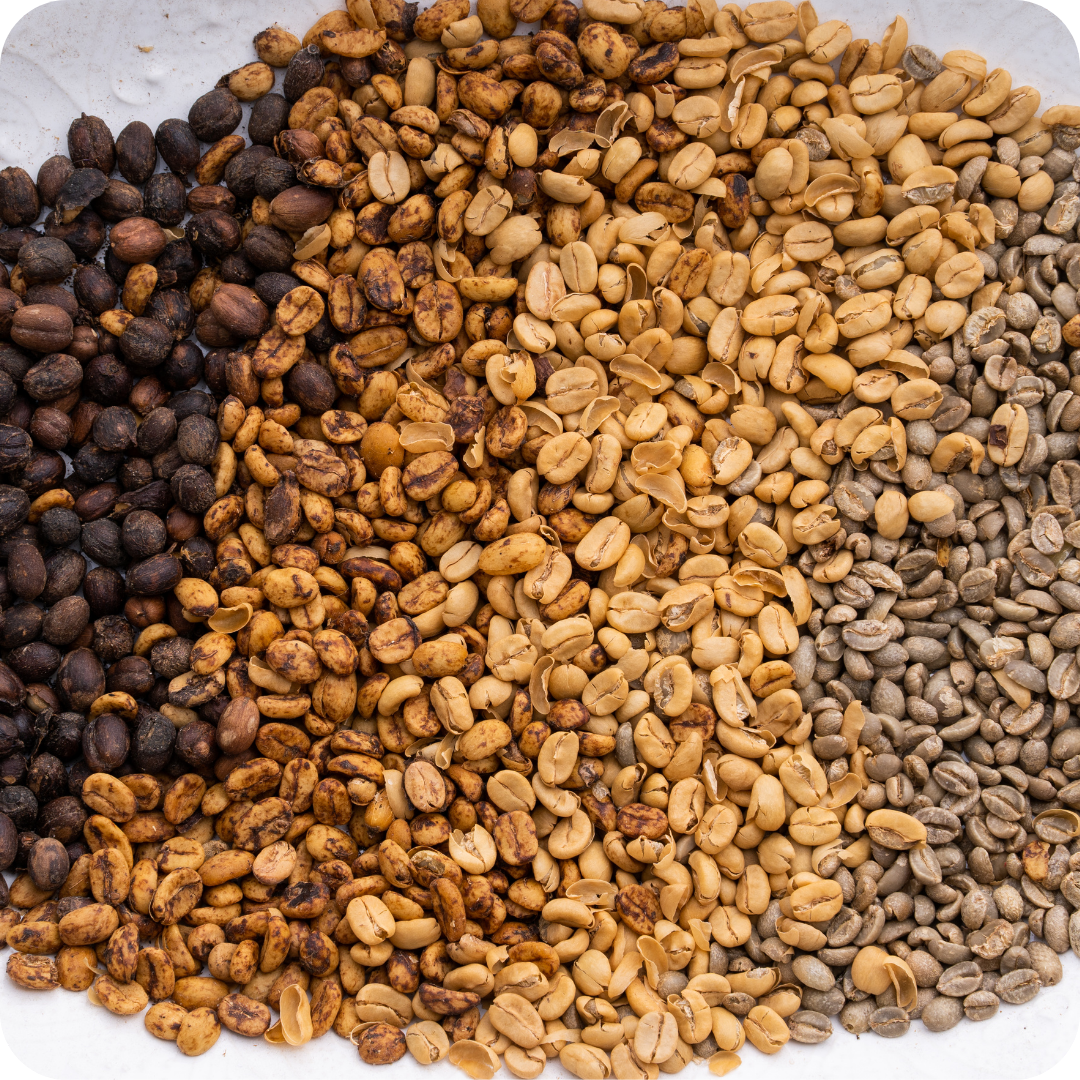
What is Coffee Processing?
Share
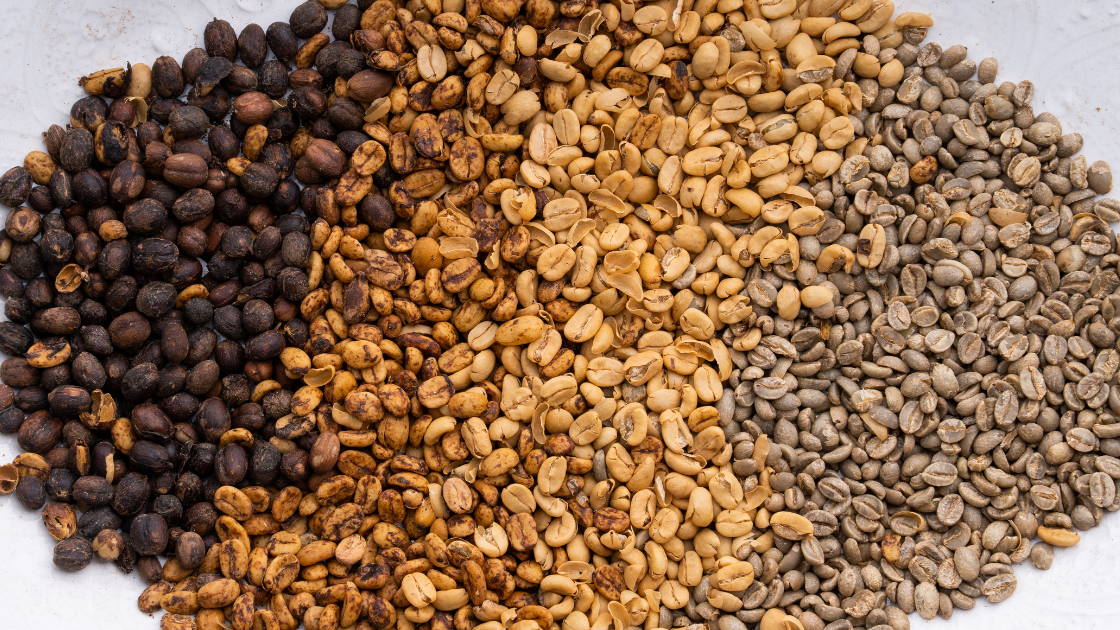
Learn about one of the most important yet least understood steps in the coffee supply chain.
You may have come across this blog post on coffee processing in a number of different ways, but we hope it went a little something like this…
Let’s say you just ordered coffee from your favorite roaster, Alma Coffee in this case, and are now holding a fresh bag of medium roast in your hands. As you pour those coffee grinds in your automatic brewer for the first time and inhale those a-maz-ing fresh coffee scents, you look at the coffee label and start to wonder … how exactly was this coffee made?
Sure, the bag gives really cool information such as the roast profile, region, and farm elevation, but you see something that you’ve never noticed before—“washed process.” What in the world does it mean to "process" coffee, and how important is it to the freshly brewed cup you’re about to enjoy?
In this week’s Alma-nac blog, we’ll be covering an underrepresented aspect of the coffee industry: coffee processing. Keep reading to learn exactly what coffee processing is, where it happens in the farm-to-cup process, and how it affects the flavor of your morning cup.
Skip ahead now or keep reading for the full breakdown:
- What is coffee before it gets to you?
- What happens after coffee processing?
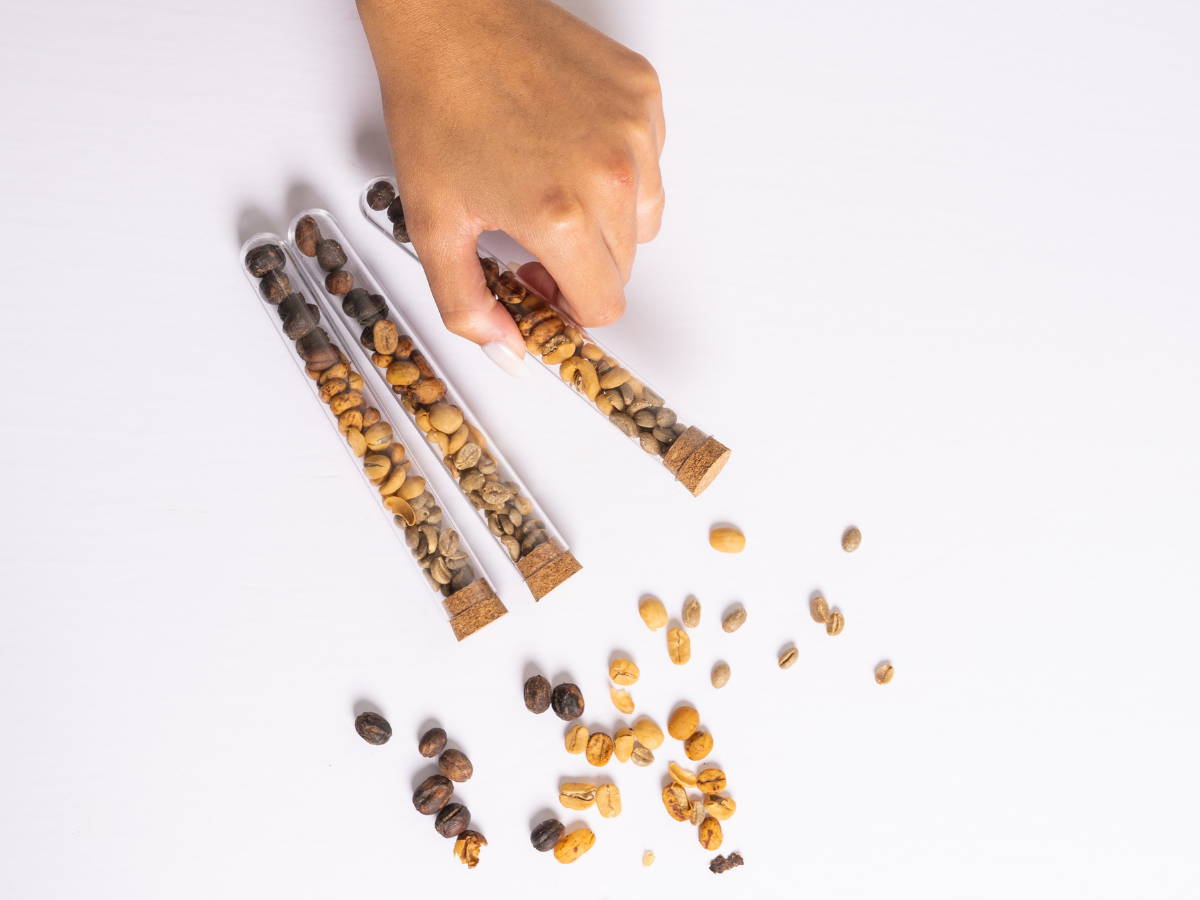
Subscribe
Our email newsletter isn't your typical marketing blast: Sign up now and get our weekly coffee blog posts, YouTube content, and coffee roast announcements!
But first... what exactly is coffee?
Before we can begin explaining coffee processing in any detail, it’s probably good to establish an understanding of what coffee actually is long before you get to sip a fresh cup of joe.
When a coffee seed is first planted, it takes approximately 4 years of proper management and tending before the coffee cherry—whose seed will eventually be picked, processed, and roasted into the more familiar coffee bean—is ready to be harvested from the tree.
From a financial perspective, this is 4 years of cash outflow and no inflow, what a business model...
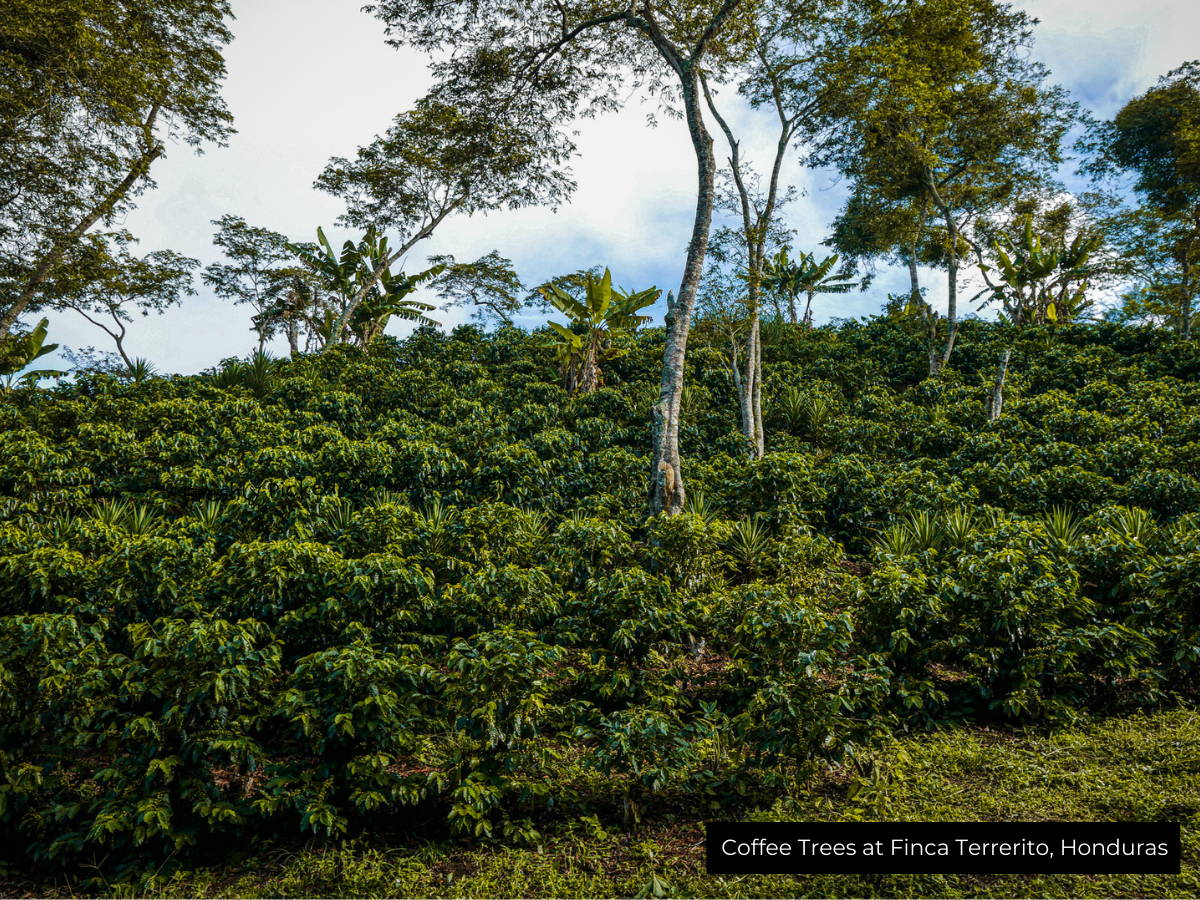
Once a coffee cherry is ready for harvest after this four-year-long wait, it is queued up for the next stage in the supply chain known as “coffee processing.”
In short, coffee processing attempts to remove the outer skin and mucilage from the inner seed(s) so that the seed itself can be dried, de-husked, and shipped to a roaster to become your favorite morning pick-me-up.
The methodologies behind coffee processing are about as old as the industry itself, the most common being wet or “washed” processing, natural or “dry” processing, and honey processing.
Many factors go into the decision on how the coffee will be processed at this stage, specifically the time/labor needed to accomplish the process and the impact each method has on the final roasted coffee flavor (more on that down below).
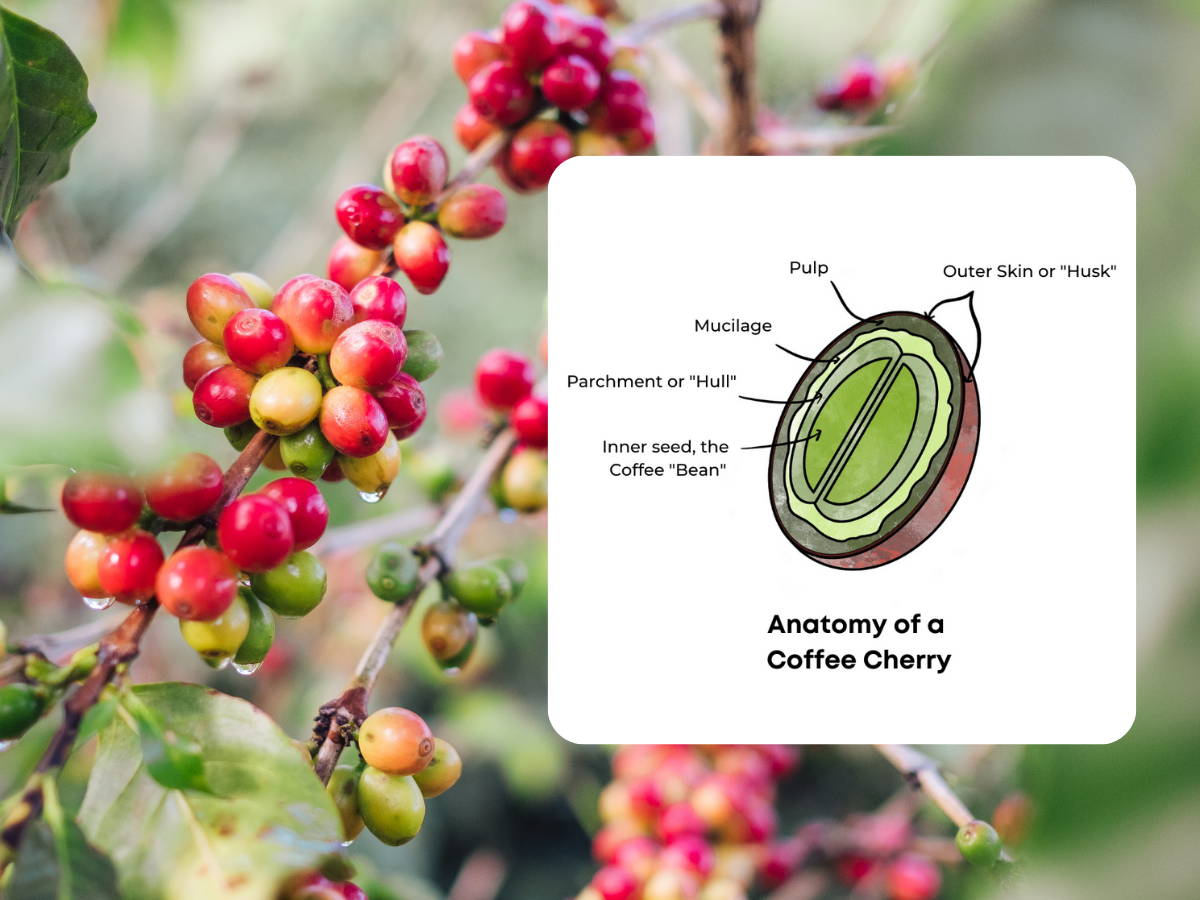
Once the coffee has been processed and dried to its ideal moisture level, it gets some beauty rest prior to being exported or roasted.
However, the act of drying or even growing the coffee aren’t as intensive as processing, and that’s why this stage in the life cycle of coffee, albeit much shorter in time than other stages, is arguably the most important stop in the supply chain.
Processing is a fundamental step in how the coffee is going to taste, too. Farmer’s have to weigh their risks, analyze the coffee properties (it’s variety, altitude it was grown at, how dense the bean is, etc...), and then make a decision on how they will process that coffee.
Wet or "Washed" Coffee Processing
The most common form of coffee processing is called wet or “washed” processing, and yes: it involves using water to strip away the outer skin of the coffee cherry. .
Like we mentioned in the previous section, coffee processing is the methodology behind removing the coffee cherry seed from the outer skin and mucilage however simple or complicated that might be.
Wet washing makes this process fairly quick and less labor intensive than some of the other processes we’ll cover in this blog, and it does this by working with the laws of physics to “wash” the skin and mucilage of the coffee cherry off the seed using various techniques and/or equipment.
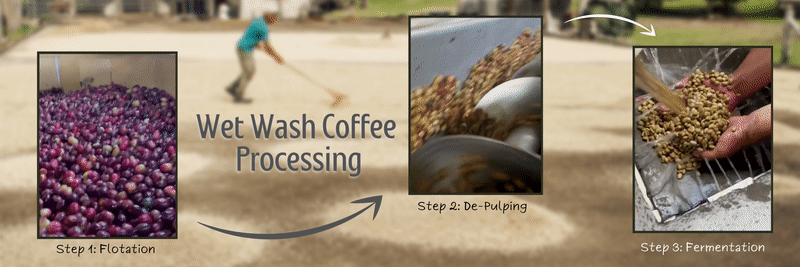
The wet washing process begins when freshly picked coffee cherries are sorted for ripeness in a process called “flotation.” To remove cherries that might be over ripe or not ripe enough, flotation tanks sort the most desirable cherries that will sink to the bottom of the tank while undesirable cherries will float.
Of course, there is much more to this quality control process than we have time to cover here, but for now it’s important to understand this flotation process—which dates back thousands of years—is still widely used by coffee farmers and processing centers to quickly sort and collect quality coffee cherries for processing.
Once the best cherries are sorted from everything else, the second-to-last step in wet or washed processing begins: de-pulping.
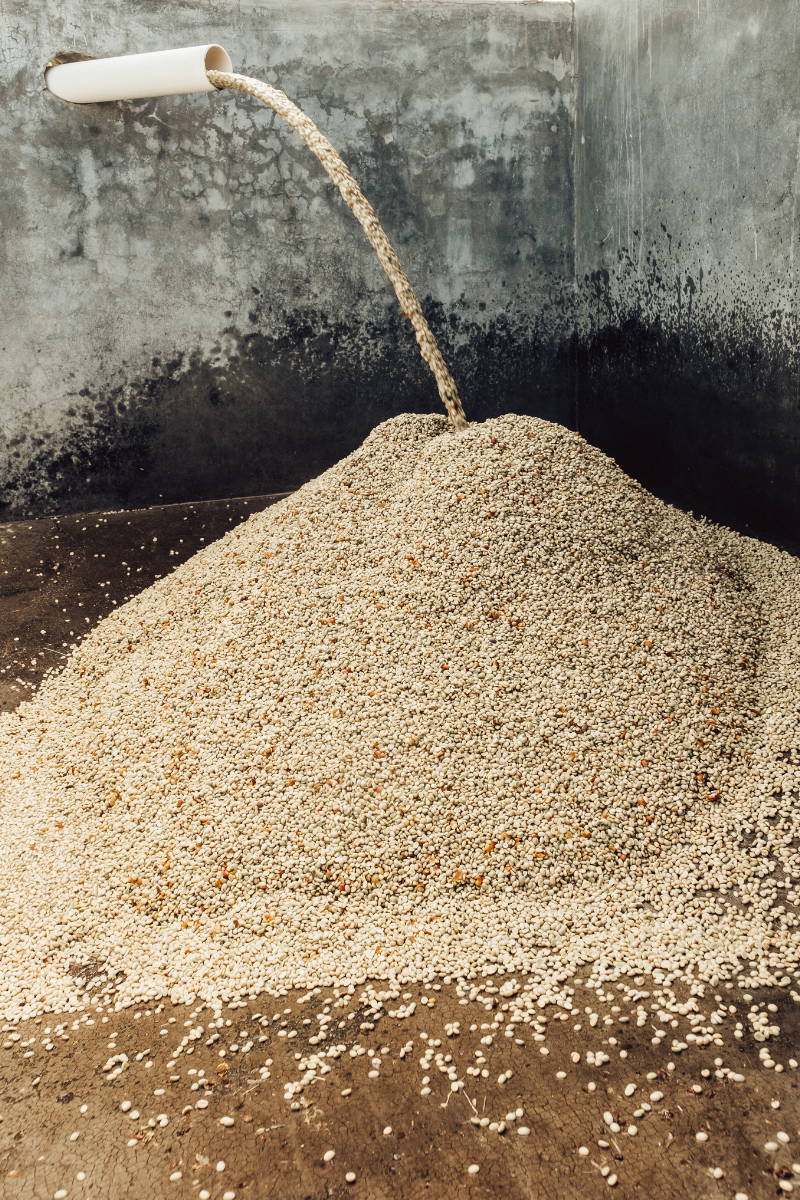
De-pulping runs coffee cherries through a machine (referred to as a sieve) that squishes & breaks the outer coffee cherry skin so that the inner seed can be fully separated from the inner mucilage.
However, this separation doesn’t fully occur for every cherry in this stage, and that’s where the de-pulped coffee moves to the final stop in wet processing—fermentation vats.
At our family coffee farms, Finca Terrerito, we recently re-vamped our entire wet processing station, opting for new equipment that uses a fraction of the water from our previous equipment, making it significantly more environmentally friendly.
In this final stage of the wet-wash process, de-pulped coffee sits in large tanks of water and coffee mucilage over the course of several days, this is an extra step we take at the farm to give the coffee a controlled fermentation, resulting in more complex and delicious notes in the coffee.
From there, the seeds can be easily filtered out of the mucilage before making their way to drying beds for the next stage in the journey.
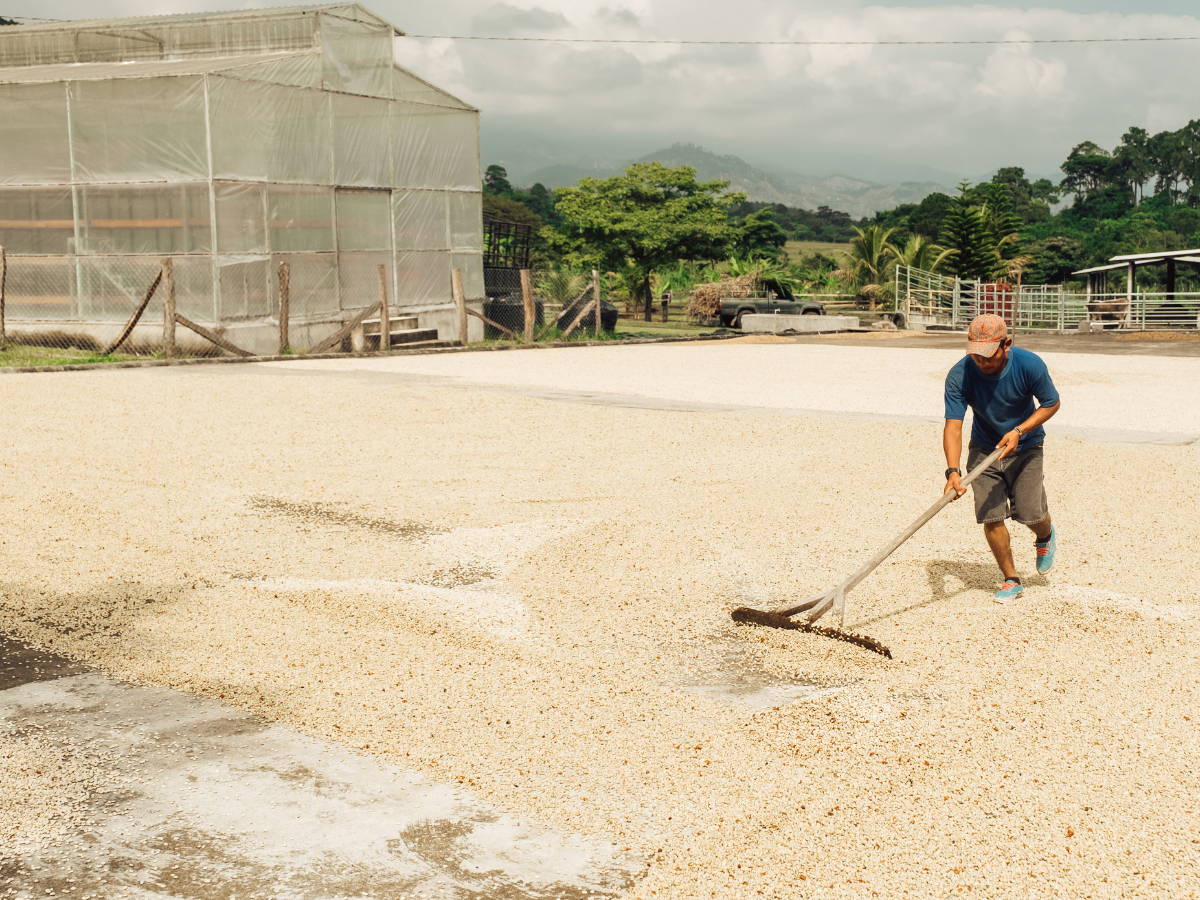
Interested in trying a wet or washed processed coffee to see what it tastes like? We think our Soulmate medium roast or Enchanted dark roast are great exameples of a tasty washed-process coffee that follows the steps listed above!
Natural or "Dry" Coffee Processing
Washed processing has become the most common coffee processing method because it saves time, labor, and crop yield compared to other methods, but it also comes at a slight cost: some of the naturally occurring flavors within the coffee cherry by the end of the process.
If a roaster sought to highlight these natural floral & fruity tasting notes, especially in lighter roasts, they would opt for natural or “dry” processed beans from their green bean supplier.
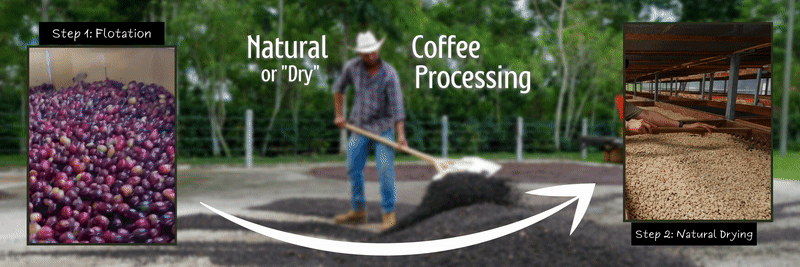
With natural processing, much like when a grape turns into a raisin, coffee cherries are dried in the sun over the course of weeks/months until the outer skin and mucilage surrounding the coffee cherry naturally separate.
As you can imagine, though, there are a LOT of things that could go wrong during this long and often unpredictable process: Rain could prevent the cherries from drying, mold could form and ruin the seeds, or pests could eat the cherries before anyone notices.
With all the risks, many farmers opt for washed coffee processing as a safe bet, but those who are willing to risk it can be rewarded with more valuable green bean to sell with uniquely imparted flavor notes.
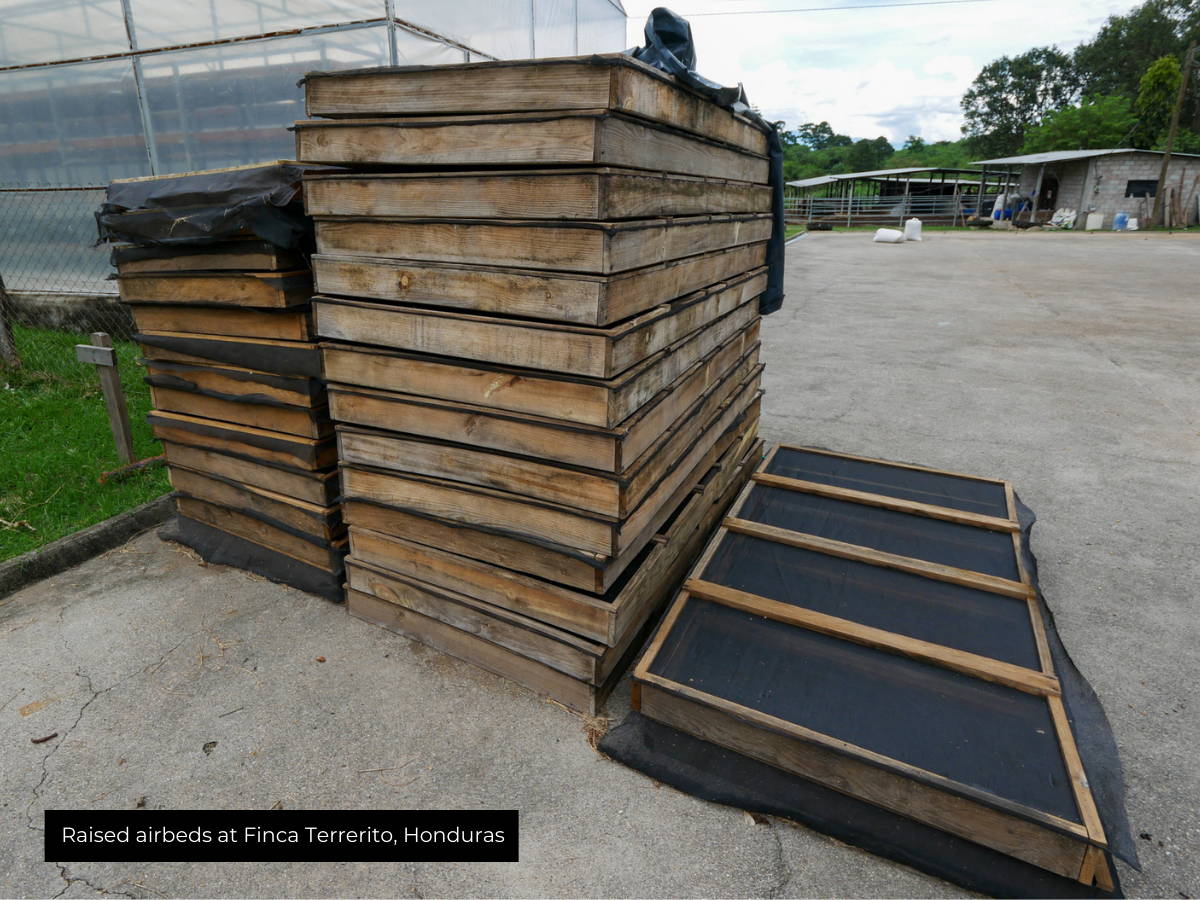
To counter some of the risks associated with natural processing at Alma’s family farms, we use a raised air bed technique to try and capture the unique flavor notes found in naturally processed coffee while also keeping the fruit dry and off the ground.
If you’re interested in tasting the difference a natural processed coffee has over a wet wash, pick up a bag of our Soulmate and Natural Process: both beans are grown at Finca La Unica, one of our family farms in Honduras, but are processed in two completely different ways.
"Honey" Coffee Processing
If you’ve read this far, might be wondering if there is a “middle ground” between the relatively safe wet wash processing method and the slightly risky natural processing method—that’s where honey processing comes in.
Despite the name, however, honey processing doesn’t involve any actual bee-made honey.
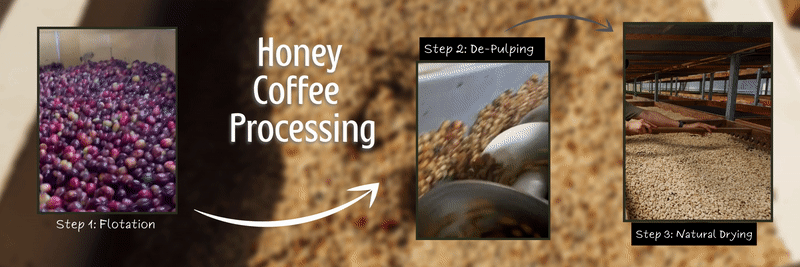
With honey processing, coffee cherries are still sorted and de-pulped like they normally would be in a washed process; But, instead of moving the de-pulped cherries to a fermentation tank, the coffee is left to dry in the sun just like natural processed coffee.
By taking this approach, farmers can significantly cut down the amount of time it takes to separate the coffee seed from the cherry while also allowing some of the naturally occurring floral & fruity notes to stay absorbed within the seed during the drying process.
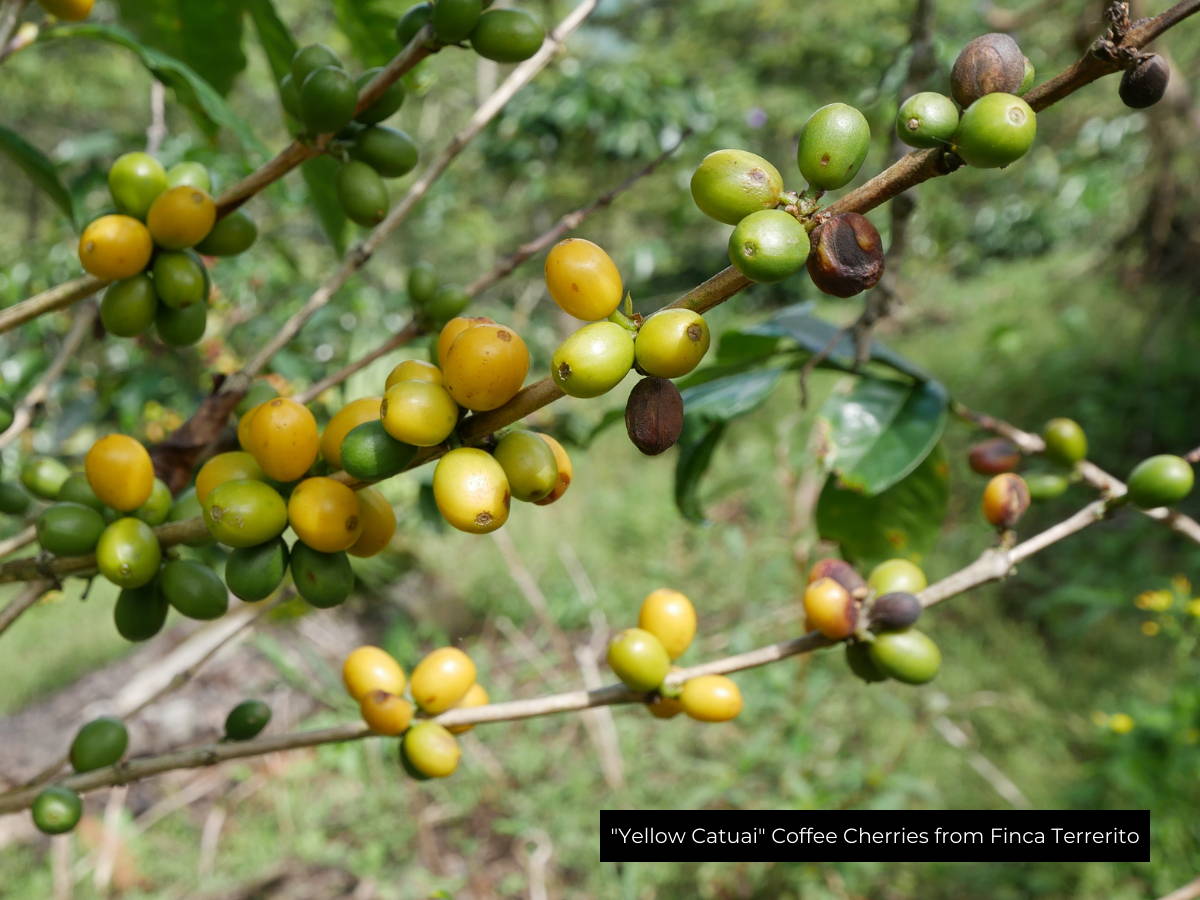
Although honey processing reduces a lot of the risks of crop loss associated with natural processing, it also requires more constant care & attention since the sweetness in the remaining mucilage of the de-pulped cherries attract pests and mold faster than wholly intact cherries.
Regardless, the resulting taste of a well done honey processed cup makes it one of our favorite processing methods here at Alma. You can try our honey process for yourself and taste exactly what we mean!
While you’re at it, check out our exclusive video walkthrough of Alma Coffee's own processing facility at our family farms in Corquín, Honduras! We walk through the wet washing and drying portions of coffee processing to help you visualize everything you just read in this coffee processing blog.
Next stop: time to roast those processed "green" beans!
Well Alma familia, that covers the three major methods used to process coffee not just at our family farms, but across the entire coffee industry! After coffee is processed, it is usually "de-husked" before being exported to your favorite coffee roaster for roasting.
We know there are some other methods such as anaerobic and washed natural we didn't have time to cover today, but we hope to follow this blog up soon with some lesser known coffee processing techniques soon.
If you have any questions that aren’t covered in this blog post, feel free to leave a comment at the bottom and our in-house coffee expert team will get back to you ASAP. Oh! Be sure to subscribe to our email newsletter if you liked this blog: we’ll notify you when new blog and exciting coffee blog posts just like this one are first published.
Written by: Kelley Bostian



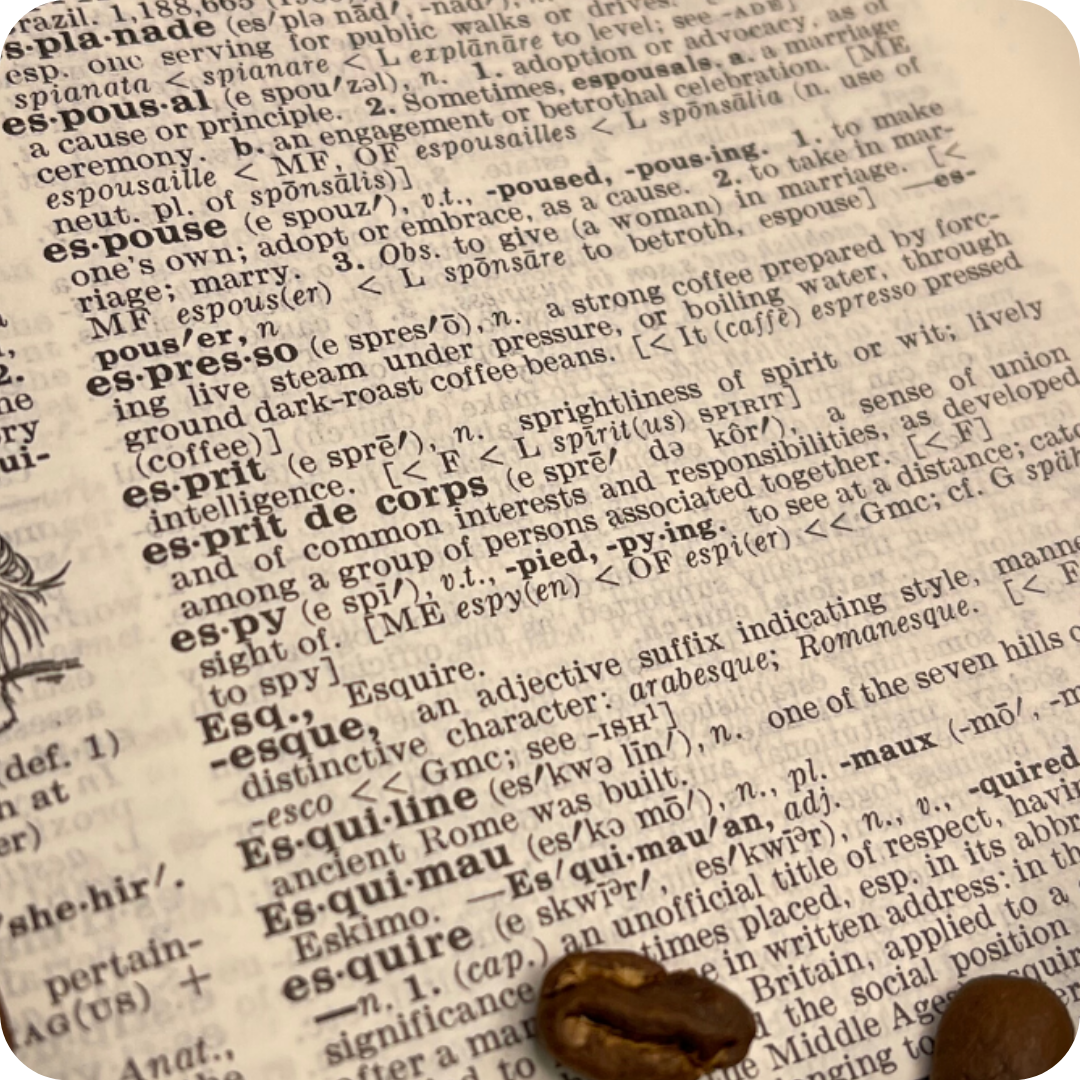

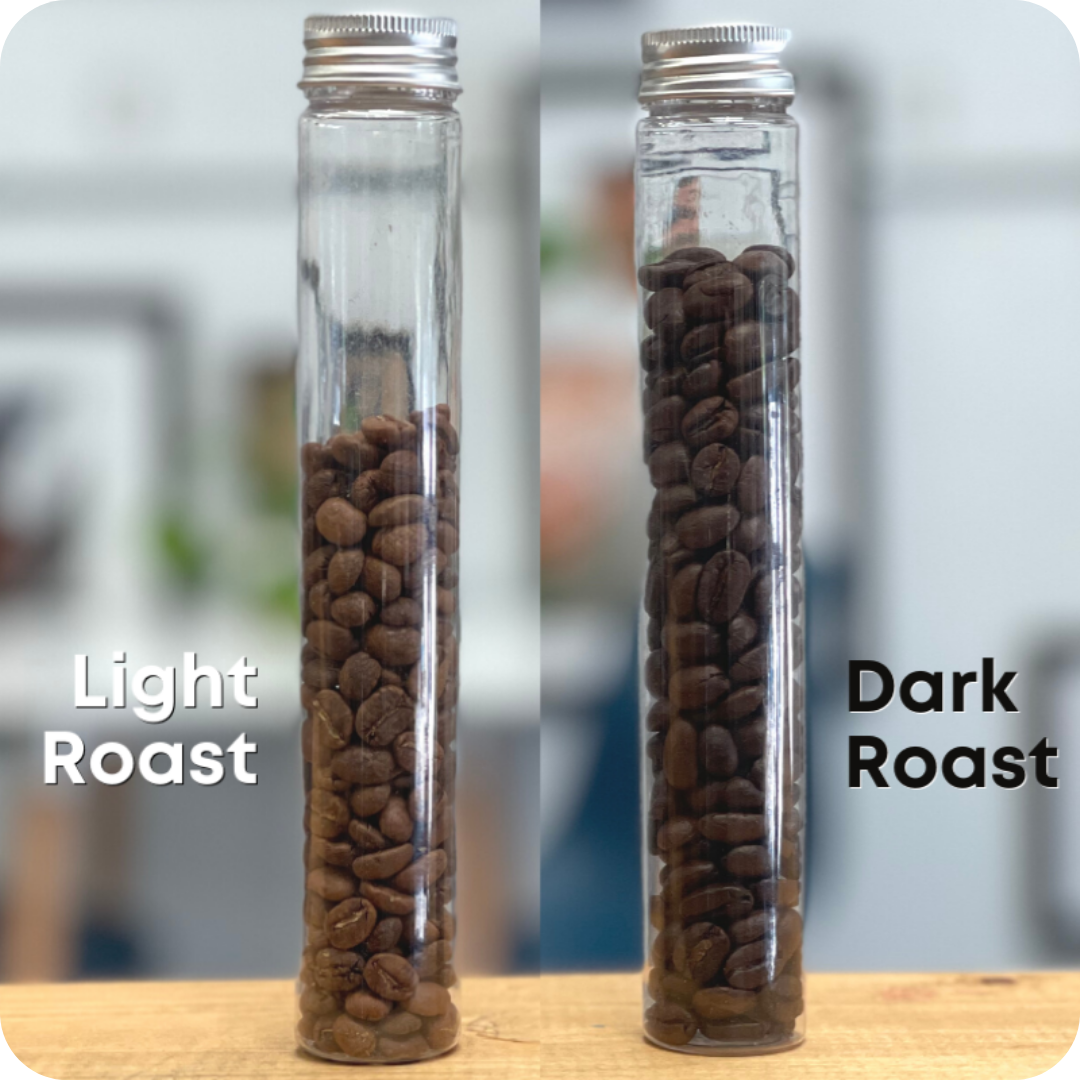
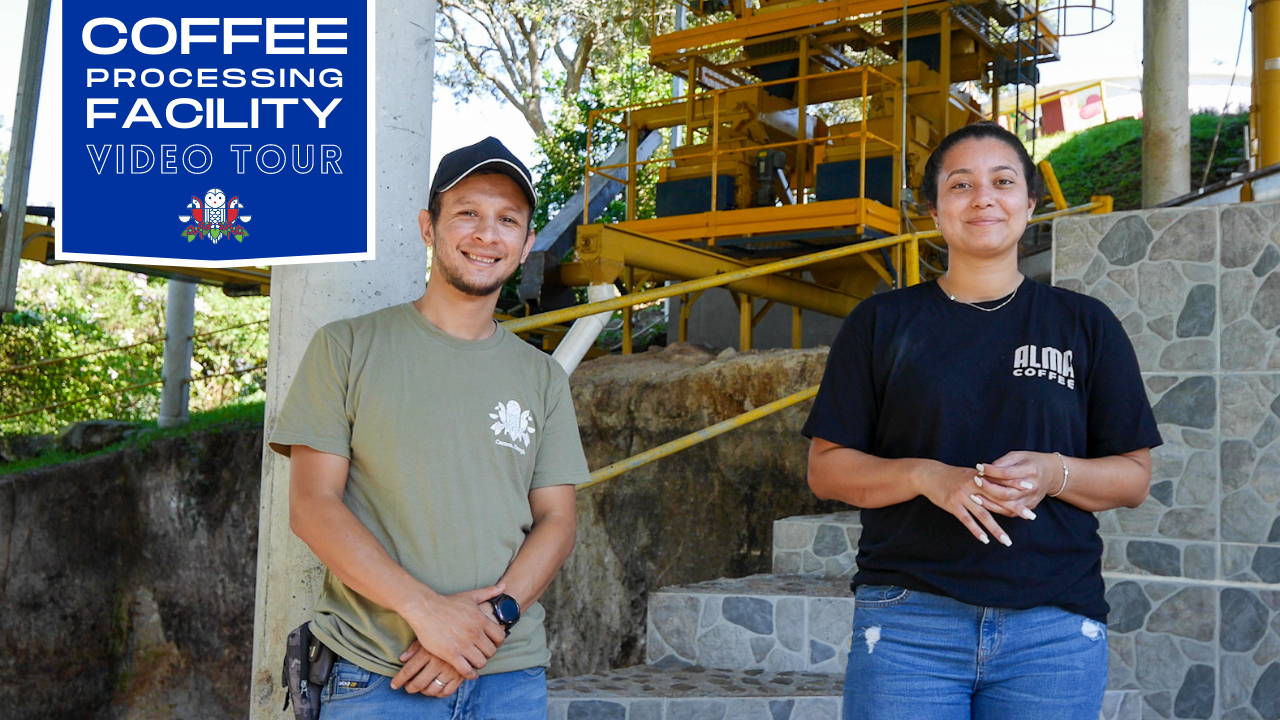


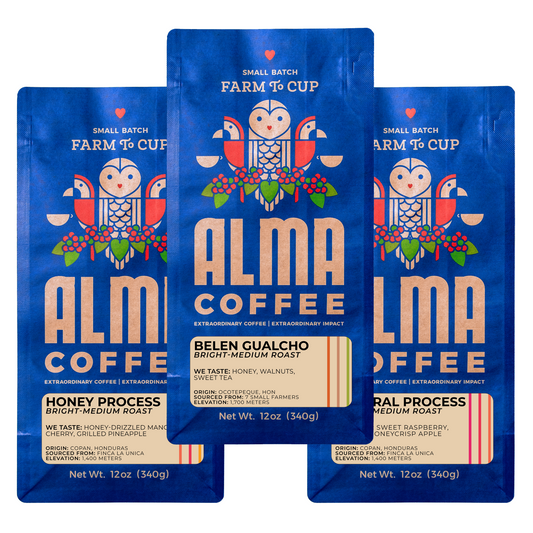

34 comments
If not for Baba Powers what would my life turn out to be? I want you all to please contact Baba Powers now to get the powerful black mirror from him. I want you all to also BELIEVE AND TRUST HIM because whatever he tells you is the TRUTH and 100% guaranteed. The black mirror makes it happen, attracts abundance. I bought the black mirror from Baba Powers and now, I am super rich and successful with the help of the black mirror. When I first saw the testimonies of Baba Powers of the black mirror, I thought it was a joke but I contacted him to be sure for myself and to my greatest surprise, the black mirror is real. The black mirror is powerful. Check him out on his website to see plenty of amazing testimonies from people about him. These are some of the people that he has helped. Here is his website; Babablackmirrorsofpowers.blogspot.com and here is his email; Babablackmirrors@gmail.com I really can’t thank you enough Baba Powers. God bless you, thank you
How Can I Get My Scammed Bitcoin Back? Through Captain WebGenesis.
In the fast-paced world of cryptocurrency, the unfortunate reality is that fund loss or theft can occur, leaving individuals in a state of panic and uncertainty. Attempting to navigate the intricate landscape of fund recovery independently can often exacerbate the situation, leading to further complications and potentially resulting in the loss of valuable time and resources. However, there are reputable firms like Captain WebGenesis that specialize in crypto scam recovery services. Their team of dedicated professionals goes above and beyond to help victims recover their assets efficiently and effectively.
Send complaint to;
Email: (Captainwebgenesis@hackermail.com)
SMS; +1(501)-436(9362).
Website; https://captainwebgenesis.com.
How Can I Get My Scammed Bitcoin Back? Through Captain WebGenesis.
In the fast-paced world of cryptocurrency, the unfortunate reality is that fund loss or theft can occur, leaving individuals in a state of panic and uncertainty. Attempting to navigate the intricate landscape of fund recovery independently can often exacerbate the situation, leading to further complications and potentially resulting in the loss of valuable time and resources. However, there are reputable firms like Captain WebGenesis that specialize in crypto scam recovery services. Their team of dedicated professionals goes above and beyond to help victims recover their assets efficiently and effectively.
Send complaint to;
Email: (Captainwebgenesis@hackermail.com)
SMS; +1(501)-436(9362).
Website; https://captainwebgenesis.com.
I feel so blessed again in my marriage after Doctor Oku brought back my husband that separated with me for a good 3 months. Even though I have mouths all over my body, it won’t be enough to thank Doctor Oku for his help in my life. My husband separated with me for 3 months and has been in pain and agony without him. So, I searched for help everywhere but nothing worked out, not until I meant Doctor Oku who I contacted online. I explained my situation to him and he promised that my husband will get back to me within 48 to 72 hours as long as my heart still beats for him. I believed in him and he prepared a spell for me and my husband called me exactly when Doctor Oku said. He pleaded and said he needs me back and now we are living happily again for the past 9 months. Everyone out there reading my article that needs help should contact him… Email: okutemple@gmail.com or whatsApp him +2347053113465
I feel so blessed again in my marriage after Doctor Oku brought back my husband that separated with me for a good 3 months. Even though I have mouths all over my body, it won’t be enough to thank Doctor Oku for his help in my life. My husband separated with me for 3 months and has been in pain and agony without him. So, I searched for help everywhere but nothing worked out, not until I meant Doctor Oku who I contacted online. I explained my situation to him and he promised that my husband will get back to me within 48 to 72 hours as long as my heart still beats for him. I believed in him and he prepared a spell for me and my husband called me exactly when Doctor Oku said. He pleaded and said he needs me back and now we are living happily again for the past 9 months. Everyone out there reading my article that needs help should contact him… Email: okutemple@gmail.com or whatsApp him +2347053113465